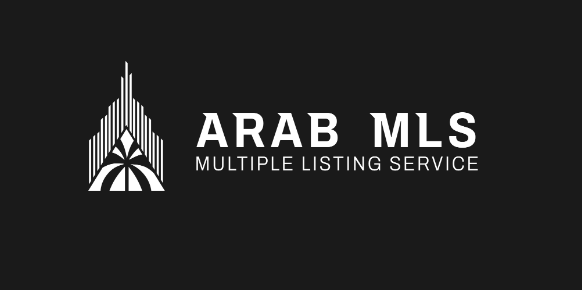The real estate industry has undergone a digital transformation, with Multiple Listing Services (MLS) now relying heavily on APIs to deliver real-time data to agents, brokers, and technology providers. MLS APIs provide programmatic access to property listings, agent information, and market analytics—data that is both valuable and sensitive. As such, implementing strong security protocols is not just a best practice; it’s a necessity.
This article explores the key security considerations and best practices for securing MLS APIs, ensuring data confidentiality, integrity, and availability in a highly interconnected ecosystem.
Why Security Matters for MLS APIs
MLS APIs are attractive targets for cyberattacks due to the high value of the data they expose. Threats range from unauthorized data scraping and misuse of listing information to broader concerns like system compromise or compliance violations (e.g., with GDPR or CCPA). Without robust security, MLS platforms risk data breaches, legal consequences, and reputational damage.
Core Security Protocols and Standards
To safeguard MLS APIs, developers and stakeholders should implement a layered security approach. This includes network-level protections, authentication and authorization protocols, data encryption, and continuous monitoring.
Authentication and Authorization
OAuth 2.0 is the industry-standard protocol for API authentication. It enables secure, token-based access to APIs and allows for fine-grained control over permissions.
-
Client Credentials Grant is often used in server-to-server communications (e.g., between a broker’s CRM and an MLS).
-
Authorization Code Grant supports user-level access, useful when third-party applications act on behalf of real estate professionals.
OpenID Connect (OIDC) can be layered on top of OAuth 2.0 for federated identity management, enabling SSO (Single Sign-On) and additional identity verification.
Role-Based Access Control (RBAC) and Attribute-Based Access Control (ABAC) can restrict access to specific resources based on the user’s role (e.g., agent vs. administrator) or contextual attributes (e.g., geographic region).
Encryption
MLS APIs should use HTTPS with TLS 1.2 or higher to encrypt data in transit. This prevents man-in-the-middle (MITM) attacks and ensures that data exchanged between clients and servers is confidential and tamper-proof.
Encryption at rest is equally important, particularly for APIs that expose data from backend systems or integrate with databases. AES-256 is a commonly used standard for encrypting stored data.
Rate Limiting and Throttling
To prevent abuse or denial-of-service (DoS) attacks, APIs should enforce:
-
Rate limiting (e.g., 1000 requests per hour per user)
-
Burst control to handle traffic spikes
-
IP whitelisting for known systems
This not only enhances security but also ensures fair usage of resources.
API Gateway and Web Application Firewall (WAF)
API gateways act as the front door for all API requests, offering centralized security features:
-
Token validation
-
Traffic monitoring
-
Logging and analytics
-
Threat detection
Pairing the API gateway with a WAF helps block common web threats such as SQL injection, cross-site scripting (XSS), and other OWASP Top 10 vulnerabilities. 
Data Masking and Field-Level Filtering
Not all consumers of the API need access to every data field. For instance, a public-facing app may not require access to seller contact information.
-
Data masking ensures sensitive data is obfuscated where appropriate.
-
Field-level filtering or query scopes can restrict data visibility based on user roles or use cases.
Audit Logs and Monitoring
Logging API access is critical for detecting anomalies and supporting compliance audits. A good logging system captures:
-
Timestamps of access
-
IP addresses and geolocation
-
Accessed endpoints
-
Authentication outcomes
These logs should feed into a SIEM (Security Information and Event Management) platform to enable real-time alerting and forensic analysis.
Security Testing and Vulnerability Scanning
Proactive security measures include:
-
Penetration testing of the API environment
-
Static and dynamic analysis tools (SAST/DAST)
-
Dependency checks for third-party libraries (e.g., NPM, PyPI, Maven)
Vulnerability management processes should ensure that security patches are applied promptly and that misconfigurations are addressed.
Compliance and Legal Considerations
MLS APIs often process personally identifiable information (PII), so compliance with data privacy laws is essential:
-
GDPR (for European data subjects)
-
CCPA/CPRA (for California residents)
-
RETS compliance (legacy systems still in use)
Data retention, user consent, and breach notification procedures should be aligned with legal standards.
Future-Proofing MLS API Security
As the MLS ecosystem continues to evolve, so do the threats. Security should not be treated as a one-time setup but as an ongoing commitment. Here are some forward-looking strategies:
-
Zero Trust Architecture (ZTA): Always verify user and device identities, regardless of network location.
-
API Security Platforms: Use dedicated platforms like Salt Security or Noname Security to provide deep inspection and automated threat detection.
-
Machine Learning for Threat Detection: Leverage AI to identify behavioral anomalies that could signal account compromise or insider threats.
Conclusion
Securing MLS APIs is critical to protecting sensitive real estate data and maintaining the integrity of property transactions. By adopting industry best practices such as OAuth 2.0, TLS encryption, rate limiting, and continuous monitoring, MLS providers and integrators can build secure, compliant, and resilient API ecosystems.
As cyber threats grow in sophistication, so must the defenses. A proactive, multi-layered security strategy ensures that the digital backbone of real estate remains trustworthy and future-ready.
Frequently Asked Questions
What is OAuth 2.0 and why is it important for securing MLS APIs?
OAuth 2.0 is an open standard for access delegation used by APIs to authorize access without exposing user credentials. In the context of MLS APIs, OAuth 2.0 allows trusted applications to access property data on behalf of users (e.g., agents or brokers) with tokens rather than passwords.
Why it matters:
-
Enables secure user and app authentication
-
Supports fine-grained permissions through scopes
-
Prevents password sharing and credential leakage
-
Allows token expiration and revocation for security
Common flows used include Client Credentials Grant (for machine-to-machine communication) and Authorization Code Grant (for user login-based access).
How does TLS ensure the security of MLS API communications?
Transport Layer Security (TLS) encrypts data in transit between the API client and the server, ensuring that sensitive data such as listing details, client info, and credentials cannot be intercepted or tampered with during transmission.
Key features:
-
Encryption (confidentiality): Prevents eavesdropping
-
Integrity: Detects and prevents data tampering
-
Authentication: Confirms the identity of the server (and optionally the client) via digital certificates
Best practice: MLS APIs should enforce HTTPS with TLS 1.2 or higher.
What is the role of an API Gateway in securing MLS APIs?
An API Gateway is a central entry point for all API requests. It provides essential security and operational features such as:
-
Authentication and authorization enforcement
-
Rate limiting and quota management
-
Logging and request auditing
-
Payload validation and schema enforcement
-
Routing and load balancing
In MLS APIs, the gateway can prevent abuse, filter malformed requests, and centralize access control policies, improving security and scalability.
Why is rate limiting necessary for MLS APIs?
Rate limiting restricts the number of requests a client can make to an API within a specified time frame.
Benefits for MLS APIs:
-
Prevents denial-of-service (DoS) attacks
-
Avoids resource exhaustion from excessive or abusive traffic
-
Controls data scraping by unauthorized or overactive clients
-
Ensures fair usage among all users
Example: Limit each API key to 1000 requests/hour with exponential backoff if exceeded.
What is Role-Based Access Control (RBAC), and how does it apply to MLS APIs?
RBAC restricts API access based on the roles assigned to users (e.g., agent, broker, admin). Each role has predefined permissions that determine what resources and actions are allowed.
Example in MLS APIs:
-
Agent: Can access their own listings and client interactions
-
Broker: Can access listings and agents within their firm
-
Admin: Can configure system settings and manage user access
RBAC ensures that users only have access to data relevant to their responsibilities, reducing the risk of unauthorized access.













